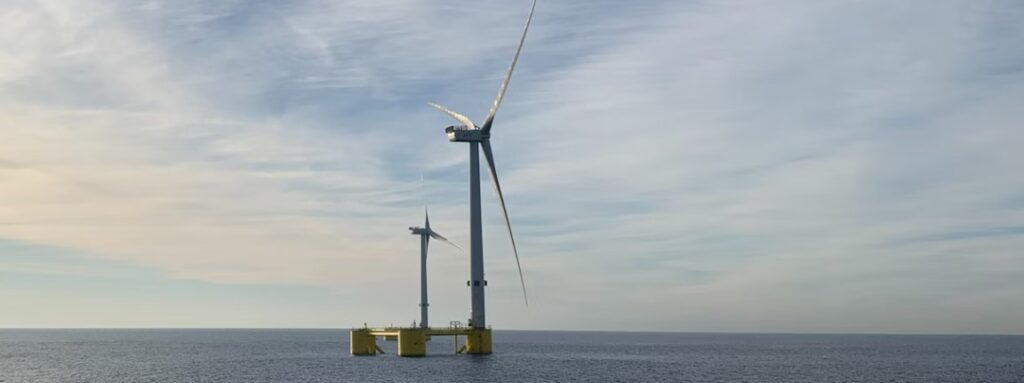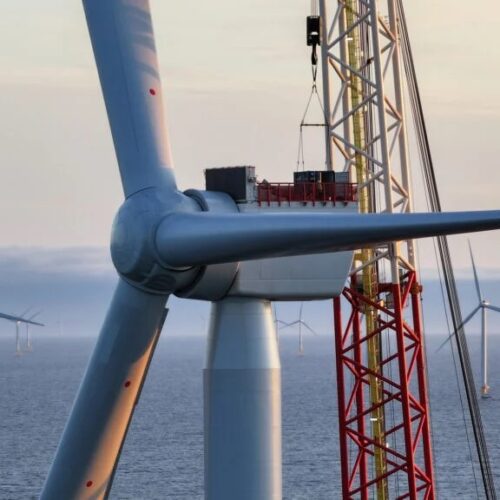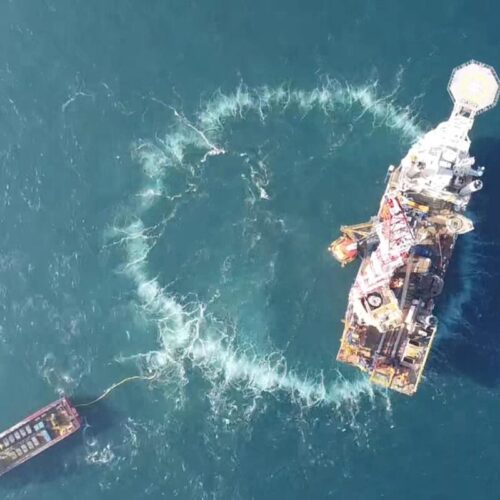Plans for a new set of floating offshore wind farms have reached a new milestone, the Crown Estate has announced.
Offshore Leasing Round 5 – launched in February 2024 – has now reached the final stage, bringing the prospect of three new floating wind farms in the Celtic Sea closer. Once built, the three floating wind farms are expected to have a combined capacity of up to 4.5GW, with turbines up to 300 meters tall sitting on floating platforms roughly the same size as a football pitch.
Bidders for the project rights were required to submit proposals for developing the new wind farms, present plans for creating new employment and economic opportunities in their chosen area, and explore how they would collaborate with local ports. Evaluation of these proposals is now complete, and successful bidders have been invited to progress to the final stage of the application process.
An auction for the three project sites is expected to take place later this spring, with the winners of these auctions expected to sign their leasing agreement this summer.
Bidders put forward a range of port locations as part of their proposal submissions. These are Pembroke Port (Port of Milford Haven), Port of Swansea, Port Talbot, Port of Bristol, Port of Plymouth, Falmouth Port, and Port of Brest. According to the Crown Estate, initial exploration of the plans indicates a “strong potential” for Port Talbot and/or the Port of Bristol to play a “key role in the delivery of Round 5 projects.”
Gus Jaspert, managing director of marine at the Crown Estate, said that this leasing round represents “a generational opportunity for the UK to be at the forefront of an exciting new global industry”, adding that developing the new technology will open up “transformational” opportunities for jobs, investment and growth.
Energy secretary Ed Miliband agreed, adding that unlocking the “untapped potential” of the Celtic Sea will allow the UK to “reap the benefits of economic growth”.
Floating offshore wind could provide a huge economic boost
Research published last year by the Crown Estate has indicated that developing floating offshore wind in the Celtic Sea could add as much as £1.4 billion to the UK economy while also creating up to 5,300 new jobs in South Wales and the southwest of England.
The UK government has continually expressed enthusiasm for increasing the rate of floating offshore wind development in UK waters. Prime Minister Keir Starmer said during his election campaign that the UK must lead by example to become a “world leader” in floating wind.
This ambition is, in fact, very much within reach for the UK. A report published in October of last year by RenewableUK declared that the nation ranks second globally for operational floating offshore wind capacity, with 78MW of capacity currently installed. Meanwhile, the UK also ranks third for its floating offshore wind development pipeline, with 33.1GW of floating offshore wind projects in development, making up 12% of the global offshore floating wind pipeline.






